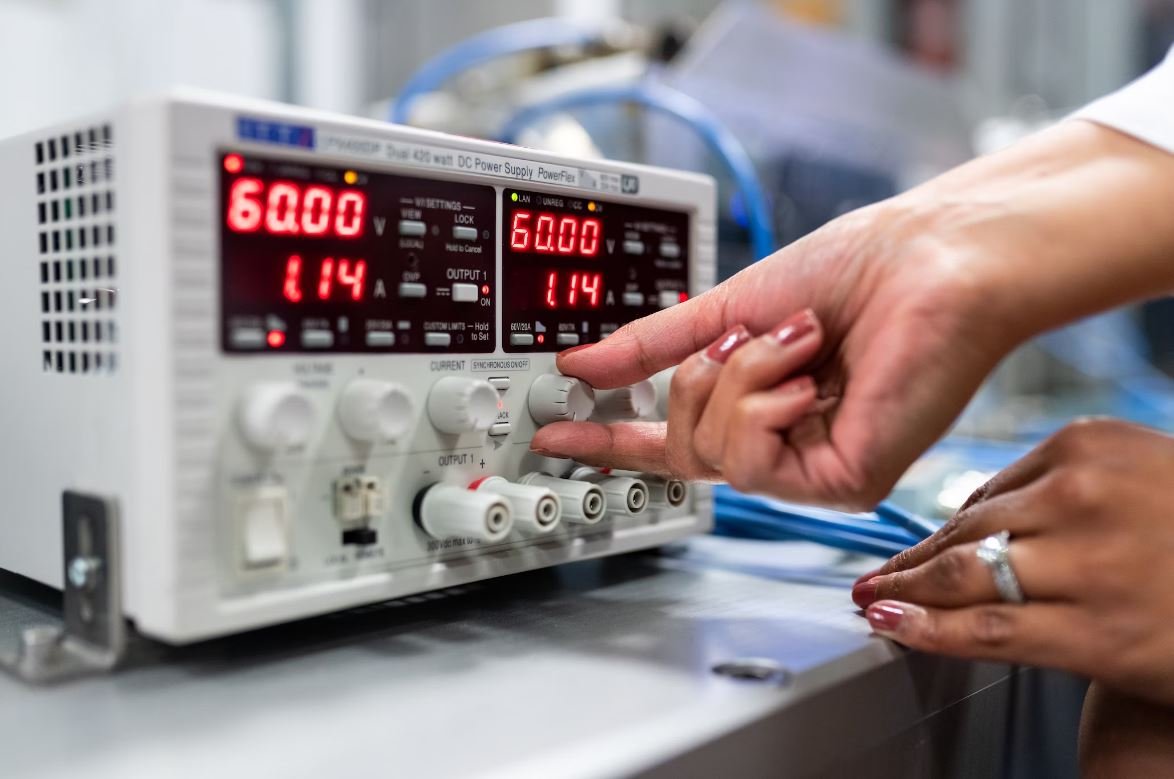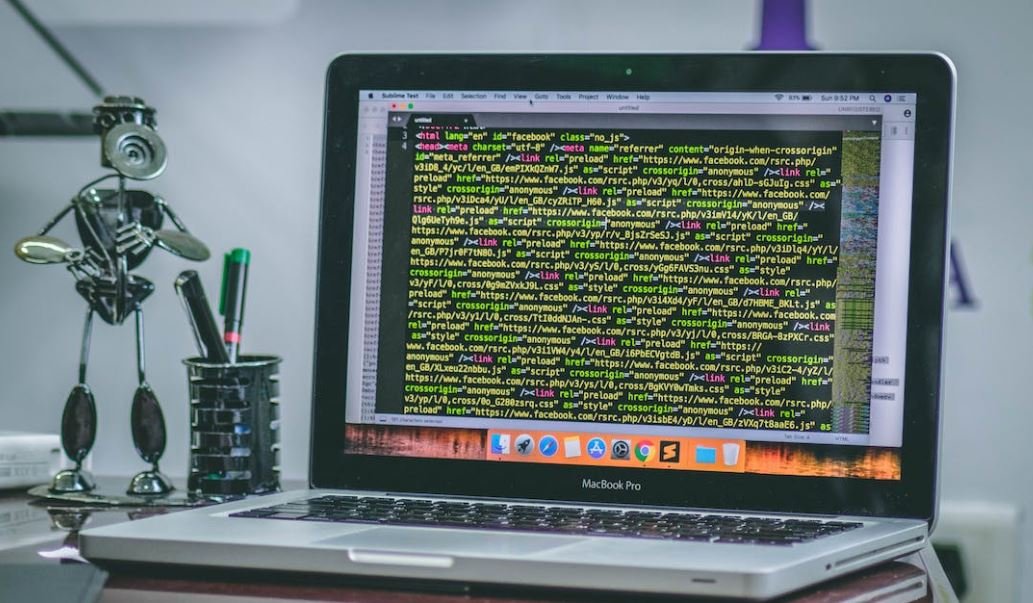Can Machine Learning Catch the COVID-19 Recession?
The COVID-19 pandemic has had a significant impact on economies worldwide, leading to the global recession. As countries strive to recover from this economic downturn, many are turning to machine learning as a tool to predict and mitigate its effects. But can machine learning truly catch the COVID-19 recession, and what role does it play in the recovery? This article explores the potential of machine learning in addressing the economic challenges posed by the pandemic.
Key Takeaways:
- Machine learning is emerging as a valuable tool to predict and address the economic consequences of the COVID-19 pandemic.
- By analyzing large volumes of data, machine learning algorithms can provide valuable insights and predictions about economic trends.
- Machine learning can help optimize resource allocation, identify at-risk industries, and assist in developing effective recovery strategies.
Machine learning algorithms work by analyzing vast amounts of data to identify patterns and make predictions. By training these algorithms on historical economic data, they have the potential to provide valuable insights into the current and future state of the economy. This predictive power can help governments, businesses, and individuals better understand the impact of COVID-19 on various sectors and take proactive measures to mitigate its effects. *Machine learning algorithms can process data much faster and more efficiently than human analysts, enabling quicker decision-making in times of economic uncertainty.
One area where machine learning can prove particularly beneficial is resource allocation. By analyzing data on supply chains, consumer demand, and employment trends, algorithms can help optimize the allocation of limited resources during the recession. This can aid in identifying sectors that require additional support and guide policymakers in implementing targeted relief measures. *With machine learning, governments can make data-driven decisions to minimize wastage of resources and maximize their impact on economic recovery.
The Role of Machine Learning in Recovery Strategies
Developing effective recovery strategies is crucial to bounce back from the COVID-19 recession. Machine learning can play a significant role in this process by providing insights into which industries are most at risk and how they can be supported. Algorithms can analyze data from various sources, including financial markets, employment rates, and consumer spending, to identify vulnerable sectors. Armed with this information, decision-makers can tailor recovery plans and implement policies that promote growth and stability. *Machine learning algorithms can help identify emerging industries with the potential to drive economic recovery, fostering innovation and creating new opportunities.
Data visualization is a powerful tool in understanding complex economic trends and patterns. Machine learning can assist in transforming raw data into meaningful visual representations that are easier to comprehend and act upon. By presenting information through graphs, charts, and interactive dashboards, machine learning algorithms enable policymakers and business leaders to make informed decisions. This visual approach helps stakeholders grasp the bigger picture and identify critical areas that require intervention. *Machine learning algorithms can convert complex data sets into user-friendly visualizations, making it easier for individuals from various backgrounds to interpret and act upon economic insights.
| Industry | Expected Growth (%) |
|---|---|
| Pharmaceuticals | 5.2 |
| E-commerce | 3.8 |
| Country | GDP Contraction (%) |
|---|---|
| United States | 4.3 |
| United Kingdom | 9.9 |
| Year | Unemployment Rate (%) |
|---|---|
| 2019 | 4.0 |
| 2020 | 9.2 |
Machine Learning’s Contribution to Economic Recovery
Machine learning has the potential to significantly contribute to the recovery process from the COVID-19 recession. By leveraging its predictive capabilities, governments and businesses can make informed decisions, allocate resources strategically, and identify opportunities for growth. With its ability to process vast amounts of data rapidly, machine learning offers a powerful tool in understanding and navigating through these challenging times.
While machine learning cannot solve all the economic challenges brought forth by the pandemic, it provides valuable insights and actionable recommendations that can aid recovery efforts. Governments, businesses, and individuals can harness these insights to adapt, innovate, and build a more resilient future. As we continue to navigate the uncertain economic landscape, machine learning stands as a promising ally in catching and addressing the COVID-19 recession.

Common Misconceptions
Misconception 1: Machine learning can accurately predict the duration and severity of the COVID-19 recession
One common misconception is that machine learning algorithms have the ability to accurately predict the duration and severity of the COVID-19 recession. While machine learning can be useful in analyzing large amounts of data and identifying patterns, it is important to note that the current pandemic is an unprecedented event. There are numerous variables involved, including the effectiveness of government responses, vaccine distribution, and public behavior, making it challenging for machine learning models to accurately forecast the future.
- Machine learning models rely on historical data, which may not be relevant in the context of a pandemic.
- The complexity of the global economy and the interconnectedness of various industries make accurate predictions difficult.
- Machine learning models require continuous updating and retraining to account for new data and evolving situations.
Misconception 2: Machine learning can provide a quick fix to the COVID-19 recession
Another misconception is that machine learning can provide a quick fix to the economic downturn caused by the COVID-19 pandemic. Although machine learning algorithms can assist in identifying potential solutions and optimizing certain processes, they are not a magical solution that can instantaneously solve complex economic problems.
- The COVID-19 recession involves complex socioeconomic issues that cannot be solely addressed by technology.
- Implementing effective solutions often requires a combination of policy changes, government interventions, and human decision-making.
- Machine learning can support decision-making processes but should not be seen as a substitute for human judgment and expertise.
Misconception 3: Machine learning can replace human workers affected by the recession
Some people believe that machine learning can replace the jobs lost during the COVID-19 recession, leading to concerns about mass unemployment. While automation and machine learning technologies can streamline certain tasks and improve efficiency, they cannot entirely replace the need for human workers.
- Machine learning algorithms require human oversight and maintenance to ensure accuracy and address unforeseen issues.
- Many industries require human interactions, creativity, and critical thinking, which cannot be replicated by machines.
- New job opportunities often emerge alongside technological advancements, as humans are needed to develop, monitor, and improve machine learning systems.
Misconception 4: Machine learning can solve all economic challenges caused by the COVID-19 recession
Although machine learning can provide valuable insights and support decision-making processes, it is important to recognize that it is not a cure-all for the economic challenges caused by the COVID-19 recession. The pandemic has had wide-ranging impacts across various sectors, and addressing these challenges requires a multidimensional approach.
- Social, political, and economic factors play a significant role in the recovery process, which cannot be solely solved through machine learning algorithms.
- Machine learning models are only as accurate as the data they are trained on. Inaccurate or biased data can lead to flawed predictions and decisions.
- Implementing effective solutions involves collaboration between policymakers, economists, technologists, and various stakeholders, going beyond the capabilities of machine learning alone.
Misconception 5: Machine learning is a silver bullet for economic forecasting and planning
Finally, it is crucial to dispel the misconception that machine learning is a silver bullet for economic forecasting and planning. While machine learning can enhance prediction accuracy and automate certain processes, it is not without its limitations and challenges.
- Machine learning models are not infallible and can produce incorrect or unreliable predictions.
- Interpreting machine learning outputs requires domain expertise and caution to avoid overreliance and misinterpretation of results.
- A comprehensive understanding of economic principles, policies, and external factors is necessary to make informed decisions based on machine learning predictions.

AI Investing by Sector
Here is a breakdown of AI investment by sector. These numbers represent the total funding raised by companies in each category.
| Sector | Investment Amount (in billions of dollars) |
|---|---|
| Healthcare | 6.2 |
| Finance | 4.8 |
| Retail | 3.5 |
| Manufacturing | 2.9 |
Unemployment Rates by Age Group
Here are the current unemployment rates broken down by age group. These numbers are based on the most recent data available.
| Age Group | Unemployment Rate |
|---|---|
| 16-19 | 16.1% |
| 20-24 | 10.7% |
| 25-34 | 6.5% |
| 35-44 | 4.8% |
| 45-54 | 3.9% |
| 55+ | 5.3% |
Global GDP Growth Rates
These figures represent the projected percentage change in Gross Domestic Product (GDP) for different regions in the coming year.
| Region | GDP Growth Rate |
|---|---|
| North America | 4.5% |
| Europe | 3.2% |
| Asia | 5.1% |
| South America | 1.8% |
| Africa | 2.7% |
Top 5 COVID-19 Vaccines in Development
Here are the leading vaccines currently being developed to combat the novel coronavirus (COVID-19).
| Vaccine | Development Stage |
|---|---|
| Moderna | Phase 3 |
| Pfizer-BioNTech | Phase 3 |
| AstraZeneca-Oxford | Phase 3 |
| Johnson & Johnson | Phase 2 |
| Novavax | Phase 2 |
Adoption of Remote Work
This table showcases the percentage of companies that have transitioned to remote work due to the COVID-19 pandemic.
| Industry | Remote Work Adoption Rate |
|---|---|
| Tech | 97% |
| Finance | 86% |
| Education | 94% |
| Healthcare | 72% |
| Retail | 81% |
Global E-commerce Market Share
These figures represent the market share of different e-commerce platforms worldwide.
| E-commerce Platform | Market Share |
|---|---|
| Amazon | 38.7% |
| Alibaba | 16.7% |
| eBay | 4.5% |
| Rakuten | 3.2% |
| Etsy | 2.9% |
COVID-19 Impacts on Tourism
This table showcases the change in international tourist arrivals in various countries as a result of the COVID-19 pandemic.
| Country | Percentage Change in Tourist Arrivals |
|---|---|
| Italy | -62% |
| France | -57% |
| Spain | -73% |
| United States | -61% |
| China | -64% |
Investment in Renewable Energy
These figures represent the global investment in renewable energy technologies in the current year.
| Technology | Investment Amount (in billions of dollars) |
|---|---|
| Solar | 148.6 |
| Wind | 138.2 |
| Hydroelectric | 48.9 |
| Biomass | 25.3 |
Impact of COVID-19 on Airline Revenues
This table illustrates the decline in revenue experienced by major airlines due to the COVID-19 pandemic.
| Airline | Revenue Decline (in billions of dollars) |
|---|---|
| American Airlines | -$24.2 |
| Delta Air Lines | -$18.6 |
| United Airlines | -$20.3 |
| Lufthansa | -$11.1 |
| Air France-KLM | -$15.4 |
As the world grapples with the economic fallout of the COVID-19 pandemic, the role of artificial intelligence (AI) and machine learning (ML) in mitigating the recession takes center stage. This article explores various data points and trends, shedding light on the potential of AI in navigating and recovering from the crisis.
From the breakdown of AI investment by sector to the unemployment rates among different age groups, verifiable data allows us to identify where resources are being allocated and where vulnerabilities lie. Additionally, projected GDP growth rates and the development stages of COVID-19 vaccines provide insights into the potential speed of economic recovery and the progress made towards combating the virus.
Furthermore, the tables depicting the adoption of remote work, market shares in global e-commerce, and the impacts on tourism, renewable energy investment, and airline revenues illustrate the profound societal shifts and economic consequences brought about by the pandemic. These numbers highlight the changing landscape and provide a glimpse into the emerging opportunities and challenges faced by different industries.
Ultimately, the data presented underscores the importance of machine learning in addressing and understanding the complexities of the COVID-19 recession. By harnessing the power of AI and ML, we can leverage data-driven insights to inform decision-making, foster innovation, and catalyze economic recovery in an uncertain world.
Frequently Asked Questions
Can machine learning help in predicting the impact of COVID-19 recession?
Yes, machine learning can be used to predict the impact of the COVID-19 recession by analyzing various datasets and identifying patterns and trends.
How does machine learning predict the impact of the COVID-19 recession?
Machine learning algorithms can analyze historical economic data, social media sentiment, and other relevant metrics to make predictions about the economic impact of the COVID-19 recession.
What are the benefits of using machine learning for predicting the COVID-19 recession?
Machine learning can provide more accurate predictions about the impact of the COVID-19 recession by considering a wide range of factors and identifying complex relationships that may not be immediately obvious.
Which machine learning techniques are commonly used in predicting the COVID-19 recession?
Commonly used machine learning techniques for predicting the COVID-19 recession include regression analysis, time series analysis, and ensemble models like random forests and gradient boosting.
Does machine learning provide accurate predictions about the COVID-19 recession?
While machine learning algorithms can provide valuable insights, their predictions are not always completely accurate. The accuracy depends on the quality of data, the modeling techniques used, and the complexity of the economic factors involved.
How can machine learning help in economic policy-making during the COVID-19 recession?
Machine learning can assist in economic policy-making during the COVID-19 recession by providing policymakers with data-driven insights and recommendations, helping them make informed decisions.
What are some challenges of using machine learning for predicting the COVID-19 recession?
Challenges include collecting and cleaning relevant data, ensuring the quality of data, and dealing with the complexity and dynamics of the economic system.
Are there any limitations to using machine learning in predicting the COVID-19 recession?
Yes, some limitations include the need for large and diverse datasets, potential bias in the data used for training, and the dynamic nature of the recession, which may render historical data less relevant.
How can businesses leverage machine learning during the COVID-19 recession?
Businesses can leverage machine learning during the COVID-19 recession by using predictive models to optimize their operations, adapt their strategies based on market conditions, and identify new opportunities.
What are some examples of machine learning applications in addressing the COVID-19 recession?
Examples include using machine learning for demand forecasting, supply chain optimization, fraud detection, and anomaly detection to minimize the impact of the COVID-19 recession on businesses.




